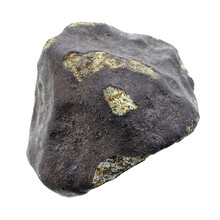The Viñales meteorite fell in Cuba on February 1, 2019. An L6 chondrite covered in a black crust, represents a rare piece of cosmic history. Read more.
The Viñales meteorite fell in Cuba on February 1, 2019. An L6 chondrite covered in a black crust, represents a rare piece of cosmic history.
The Viñales meteorite fell in Cuba on February 1, 2019. An L6 chondrite covered in a black crust, represents a rare piece of cosmic history.
The Viñales meteorite fell in Cuba on February 1, 2019. An L6 chondrite covered in a black crust, represents a rare piece of cosmic history.
The Viñales meteorite fell in Cuba on February 1, 2019. An L6 chondrite covered in a black crust, represents a rare piece of cosmic history.
Origin and History of the Viñales Meteorite
On the afternoon of February 1, 2019, the tranquility of Pinar Del Rio, Cuba, was disturbed by a bright fireball accompanied by loud sonic booms. Residents initially thought it was a plane crash due to the explosions and subsequent rumbling. What followed, however, was a meteor shower over the Viñales Valley, an area known for its national monuments and status as a UNESCO World Heritage site. The first and some of the largest stones were collected near the "Prehistoric Mural" monument, with many other finds scattered throughout Viñales and the entire valley.
Characteristics of the Meteorite
The Viñales meteorite consists of hundreds of individual pieces, ranging from 2 to 1100 grams, with a total collected mass of about 50-100 kg. Each piece is covered with a black fusion crust, indicating intense exposure to heat upon entry into the Earth's atmosphere. The interior reveals a light gray substance, visible through the broken crust.
Petrography and Geochemistry
The Viñales meteorite is a common chondrite of the L6 type, characterized by a light-colored interior with dark, pseudotachylitic shock veins. This structure indicates a high degree of crystallization and the presence of various chondrules and metallic grains. The petrographic and geochemical analysis reveals a rich composition, including olivine, Ca-pyroxene, diopside, and plagioclase, as well as traces of chromite, kamacite, troilite, taenite, and other accessory minerals. The meteorite also exhibits a remarkable resistance to weathering processes (Weathering class W0) and a moderate shock stage (S3-S4).




